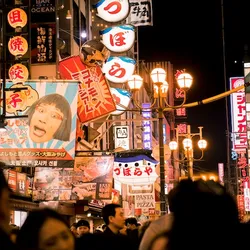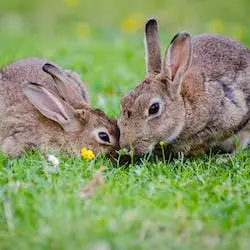
Level 1:
Japan is a fun place. It mixes old things with new things. It has old art like Sumi-e painting. It also has new art like manga. Houses in Japan are made from things in nature like wood and clay. That is called architecture. People in Japan love food. They eat food like rice and fish. This is called Washoku. They also make new food mixes. People in Japan like festivals. One festival is to look at pretty cherry blossoms. This is Hanami festival. Today, people in Japan also love J-Pop, manga, and video games.
Highlighted vocabulary words:
- Sumi-e painting: old type of painting in Japan
- Manga: a new style of Japanese drawing
- Architecture: building houses.
- Washoku: traditional Japanese food
- Hanami: a festival to look at cherry blossoms
- J-Pop: popular music in Japan
Level 2:
Japan is exciting. It has a mix of old and new things. It has traditional art, like Sumi-e painting. It also has contemporary art, such as manga. Japanese homes use natural things like wood, which is a part of architecture. Food like rice, fish, called Washoku is famous. There is also trendy food. Festivals are popular in Japan. One is the colorful Hanami festival. Nowadays, people enjoy J-Pop, manga, and video games. Traditional and new things make Japan unique and interesting.
Highlighted vocabulary words:
- Traditional: Something that is a part of old customs.
- Sumi-e Painting: A stylish form of painting in Japan that has been around for a long time.
- Contemporary: Something that is happening now or is modern.
- Manga: A Japanese style of comic books and cartooning.
- Architecture: The design of buildings.
- Washoku: Traditional style Japanese food.
- Hanami: A spring festival in Japan where people enjoy the beauty of cherry blossoms.
- J-pop: Modern Japanese music that is very popular.
Full Story:
Japan, a country known for its meticulous blend of ancient traditions and modern innovations, offers a rich tapestry of experiences that aligns with its past while also embracing its future. This article aims to explore the unique symbiosis of tradition and innovation that defines Japanese culture.
Japanese Art
One arena where Japan’s ancient traditions merge with modern innovation is Art. From the delicate brush strokes of traditional Sumi-e painting, a style steeped in philosophy and spirituality, to the vibrant, edgy world of contemporary manga and anime, Japanese art is a testament to the country’s ability to adapt and evolve, while holding true to its core aesthetics.
For example, Yayoi Kusama, one of the most prominent contemporary artists in Japan, combines traditional elements of Japanese art with avant-garde concepts. Her installation art, often featuring repetitive patterns and bright polka dots, carries traces of Japanese minimalism amidst the bold creativity of the modern era.
Architecture In Japan
Living in harmony with nature is a guiding philosophy in Japanese culture. And, nowhere does it manifest clearer than in its architecture. Japanese houses, notably the centuries-old Machiya, exemplify this with their organic construction materials (like wood, rice straw, and clay) and designs that foster a smooth, almost non-existent, boundary between the indoors and outdoors.
In modern times, this philosophy of harmony underpins the work of master architects like Tadao Ando. His concrete structures, rather than clashing with the surrounding environment, coalesce with it. The Church of the Light in Osaka, with a cross-shaped cutout, is a classic Ando structure that draws in natural light, coordinating modern design with traditional respect for nature.
Food Innovation
Food is a cornerstone of culture, and Japan is no exception to this. Traditional Japanese cuisine, or Washoku, characterized by its use of seasonally fresh ingredients and key staples like rice, fish, and fermented foods, was inscribed on UNESCO’s Intangible Cultural Heritage list in 2013.
But, Japan is also a place of culinary innovation. Tokyo holds the most Michelin star restaurants in the world, a testament to Japanese chefs’ creativity and commitment to quality. Fusion foods, like the ‘Ramen Burger’ or Western-inspired Japanese pastries, further highlight the marriage of tradition and innovation in Japanese cuisine.
Traditional Festivals and Modern Entertainment
Japan is known for its colorful, vibrant festivals, each marking different seasons or religious rituals. From the Hanami cherry blossom festival, where people gather to view and appreciate the transient beauty of cherry blossoms, to the summer Bon Odori festivals, where entire communities come together to dance and remember their ancestors, these events strengthen communal bonds and preserve ancient traditions.
Nowadays, these cultural celebrations coexist with contemporary entertainment forms, like J-Pop, manga, anime, and video games, which have gained global popularity. Akihabara district in Tokyo, for instance, is a hub for manga and anime fans worldwide, with its vast array of stores selling comics, figurines, and other related merchandise.
Overall, Japan presents an intriguing fusion of past and present, where traditions are not just preserved but adapted to the current zeitgeist. The result is a continually evolving cultural panorama that both respects its history and embraces the new. This dualism is quintessentially Japanese and encapsulates the nation’s unique identity. From art and architecture to food and entertainment, Japan’s cultural innovations and traditions offer a fascinating glimpse into a society that values balance, harmony, and the spirit of evolving continuity.
Questions:
Question: What is the significance of Yayoi Kusama’s artwork in the context of modern and traditional Japanese art?
Answer: Yayoi Kusama’s artwork symbolizes the blend of modern and traditional elements in Japanese art. Her installations, with repetitive patterns and vibrant colors, reflect a mix of Japanese minimalism and the bold creativity of the modern era.
Question: In your opinion, how does Tadao Ando’s architectural style reflect the philosophy of living in harmony with nature?
Answer: Tadao Ando’s architectural designs demonstrate the concept of living in harmony with nature by using concrete structures that blend seamlessly with surrounding environments. His buildings like the Church of the Light, create a link between nature and man-made structures, embodying the philosophy of harmony.
Question: How has globalization impacted traditional Japanese festivals and entertainment?
Answer: Globalization has allowed traditional Japanese festivals and entertainment to gain international recognition. While some argue that it might risk eroding the local culture, it also provides an opportunity for traditional customs to adapt, evolve, and appeal to a universal audience.
Question: How do you feel about the integration of traditional elements and modern innovations in Japanese culture, especially in the context of food?
Answer: Personally, I find it fascinating. The integration of traditional and modern elements in Japanese cuisine exemplifies their respect for heritage while embracing change. It showcases the bold creativity of Japanese chefs, all while maintaining their commitment to quality and the philosophy of Washoku. It’s a testament to their balance and harmony.
Fill in the Blanks:
- The delicate art of _________ is a traditional painting style in Japan.
- Modern art in Japan is represented by __________ and anime.
- Yayoi Kusama’s work is known for its __________ design patterns.
- The age-old Japanese houses called ________ , are made with natural materials like wood and clay.
- Famous architect Tadao Ando is known for his harmonious __________ designs.
- Traditional Japanese cuisine, or __________ , is known for its use of fresh, seasonal ingredients.
- The __________ cherry blossom festival is a communal event marking the transient beauty of cherry blossoms.
- Contemporary entertainment forms like __________ have gained global popularity in Japan.
Words List (in random order): Sumi-e painting, manga, installation art, J-Pop, Machiya, architecture, Washoku, Hanami.




